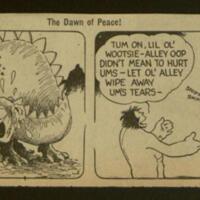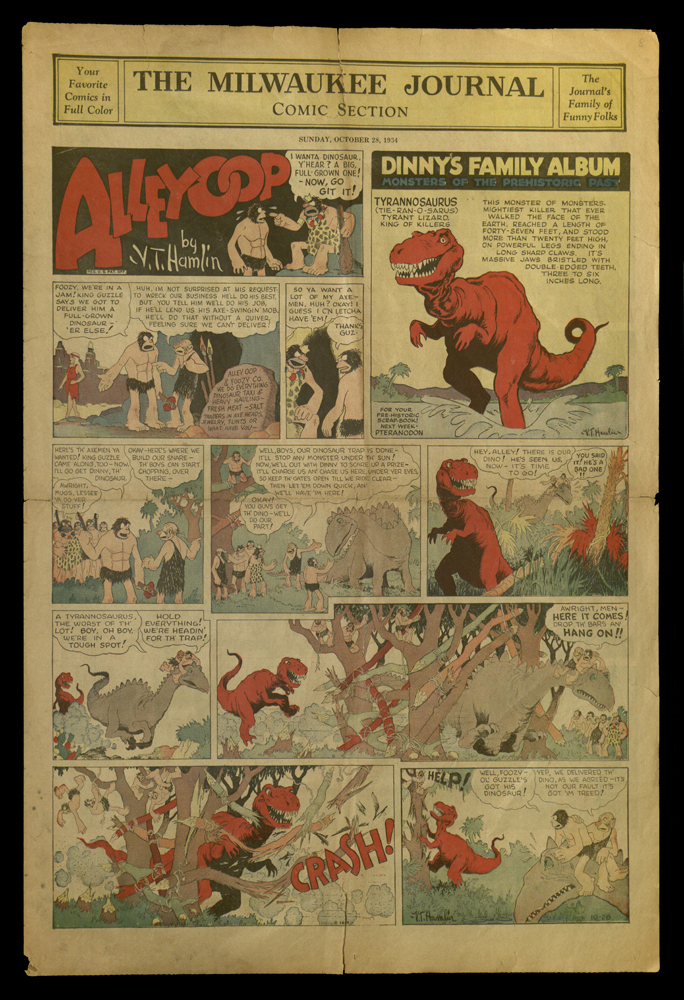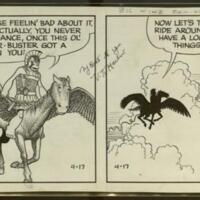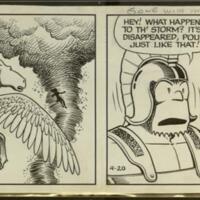Alley Oop
Alley Oop Begins
Alley meets Dinny
Alley Oop's first adventure was a retelling of the fable of Androcles and the Lion, in which Androcles removes a thorn from the lion's paw. Wandering in the jungle, Oop encounters a dinosaur caught in some underbrush. He frees him, they fight, then become inseparable friends. Hamlin called Dinny his "cartoonosaurus," as he drew him combining parts of various different dinosaurs, such as the camarasaurus, diplodocus, and stegosaurus.
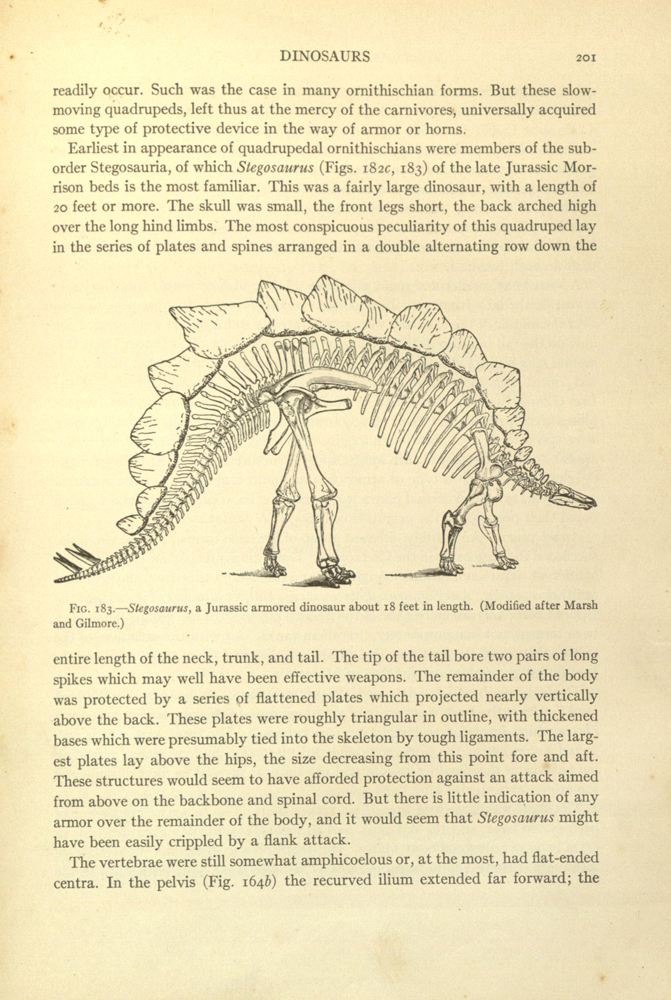
Alfred Sherwood Romer.
Vertebrate Paleontology.
Chicago: University of Chicago Press, 1933.
©1933, The University of Chicago.
Paleontology
Alley Oop was an outlet for Hamlin's passion for natural history. The early Sunday strips contained an informational panel entitled "Dinny's Family Album," which showcased a different species of dinosaur or other prehistoric animal each week. Hamlin used this textbook in his research for the feature.
Hamlin's interest in geology and paleontology was sparked while working as a photographer and artist for different oil companies in Texas, where fossils were an essential part of the business. He was almost entirely self-taught in these areas, from reading books checked out of the library. Hamlin's passion for natural history led him to study human history as well.
Dinny's Family Album
Hamlin's strip for October 28, 1934 features the Tyrannosaurus in "Dinny's Family Album." In the early days of the comic strip, it was not uncommon to devote an entire page to one Sunday strip, giving the artist much more room for creativity and detail.
Original Artwork
The VT Hamlin Collection contains a number of pieces of original artwork for the strips. This particular strip is from the Pegasus story advertised in the 1964 NEA Syndicate brochure shown in this exhibit.
The Time Machine
By 1938, Hamlin was getting frustrated with the limitations of a strip set solely in the small world of Moo. His wife, Dorothy, was the one who came up with the idea to incorporate a time machine into the strip. While Hamlin had to convince the syndicate to let him take this very dramatic turn, he won them over after a week of negotiations. The Twentieth century first made its appearance in Hamlin's strip on Sunday, April 9, 1939, when Alley and Ooola were transported out of the Stone Age and into the laboratory of Dr. Wonmug.
The time machine opened up the whole of human history for Hamlin to explore, and his characters soon encountered important historic and literary figures, such as Cleopatra, Helen of Troy, Napoleon, Shakespeare, and Caesar.
The Syndicate
The NEA syndicate sent promotional materials such as this one to newspapers that didn't carry the strip. Advertising a new plotline, such as this mythological story, they would offer an easy starting point for the newspaper to pick up the strip, giving their readers an introduction to the characters and situation. The interview with Hamlin is particularly poignant as it demonstrates his knowledge of the subject and unique sense of humor.

